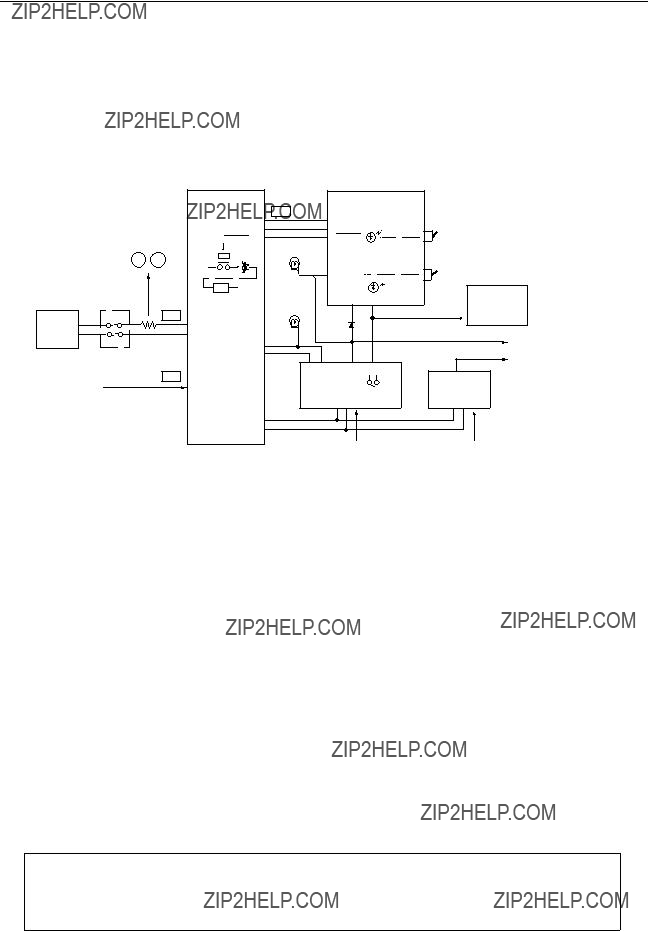4.4 Battery charger(BC-6158)
4.4 Battery charger (BC-6158)
4.4.1 Connection of battery charger and battery monitor circuit
Battery charger BC-6158 is controlled from the battery control panel of the console
panel.
Fig. 4.4.1 Connection of battery charger and battery monitor circuit
The battery monitor circuit (05P0607) monitors battery voltage.
If battery voltage drops to 22 V, [LOW] indicator comes on and the buzzer sounds. With ???BATT CHARGER switch??? set to ???AUTO???, the charger starts charging the battery when the battery voltage drops to 24.5 to 25.0 V, and stops charging when the battery is charged by 28.0 to 28.5 V automatically. If the switch is set to ???MANUAL???, the battery is charged in continuity. The signal to control charging is ???3. CHARGE-L??? signal which turns ON/OFF relay K1 on the AC power supply line of BC-6158.
AC FAIL signal from PR-850A (AR), a contact signal of the relay is output when AC supply is turned ???OFF??? and switched to the battery.
This signal is supplied to ???2. EMG-L??? of the battery monitor board to indicate ???IN USE???. This signal is also supplied to FS-5000/2550/1562-25 and automatically reduces the transmission power to 60 to 70 W.
Note) The ???AUTO??? position is provided to prevent over discharge of the battery. This ???AUTO??? position is not intended to use both the battery and AC/DC supplies at the same time for so called ???floating operation???.
4.4 Battery charger(BC-6158)
4.4.3 Battery charger (BC-6158)
Battery charger BC-6158 can charge clad type or pasteboard vent type batteries of up to 300 AH. It is a constant voltage/current charger which supplies a constant voltage of 28 V and a constant charging current of 20 A (30 A).
V
28V
Fig. 4.4.4
I
20A(30A)
The power supply to the charger is connected to a tap of transformer T1 which is selected according to the supply voltage.
The maximum charging current differs according to the capacity of the battery to be charged. For example, for a battery of 200 AH the maximum charging current is 20 A and for a 300 AH battery the current is 30 A. VR2 adjusts the maximum current to 20 A or 30 A. VR1 adjusts the output voltage of the charger to 28 V. The thermal sensor is mounted on the heat radiator of the charger, and it operates when the sensor detects a temperature of 60 degrees.
Fig. 4.4.5 BC-6518 block diagram
05P0659 board
S1: 60 degrees thermal sensor
Fig. 4.4.6 BC-6158 left side
3.4 BC-6158
3.4 BC-6158: Battery charger unit
K1
(Input rlay)
Q1
05P0659
R3/4
(0.01ohms)
S1: 60 degrees thermal sensor
Fig. 3.4.2 BC-6158 left side


